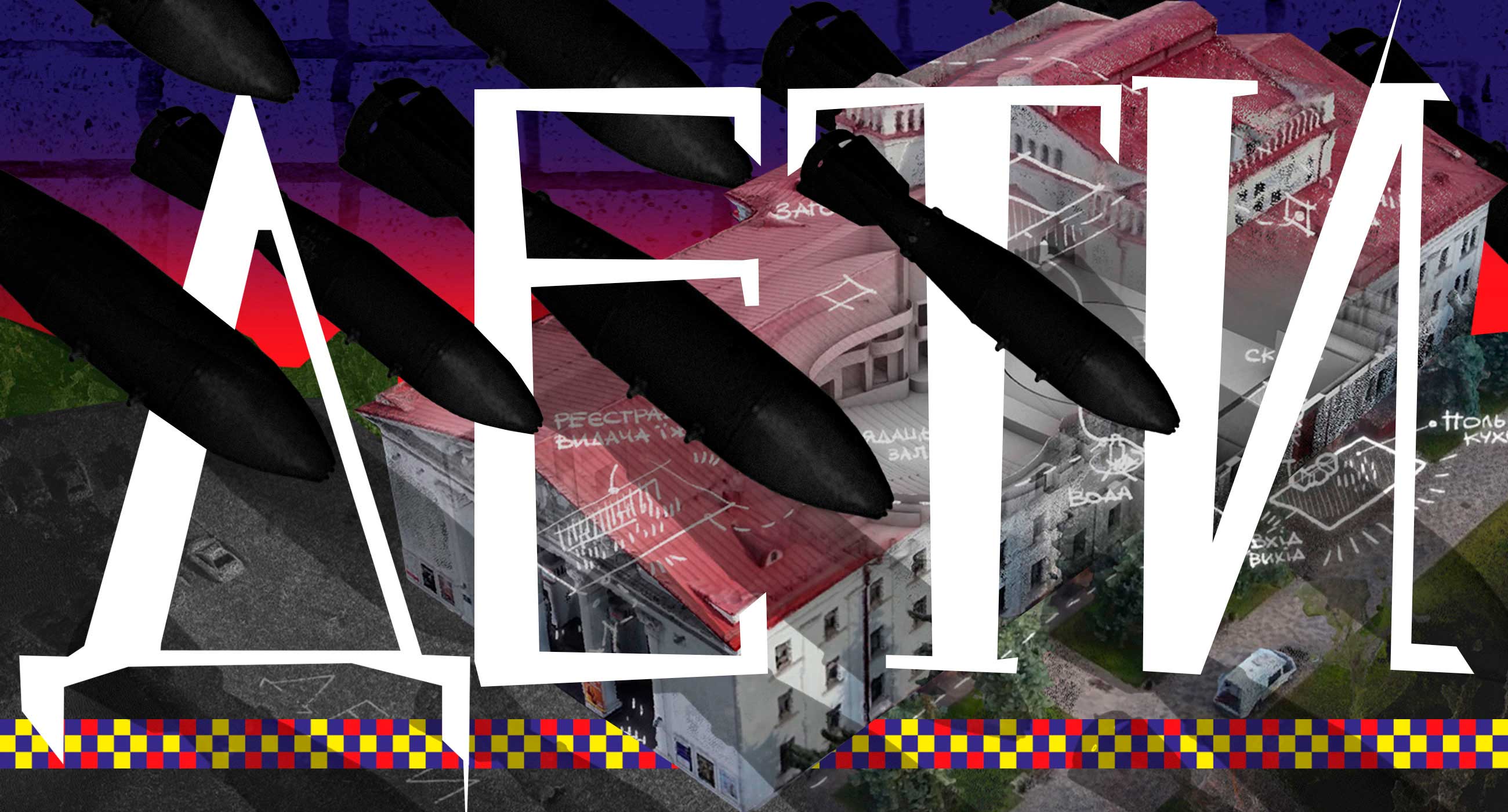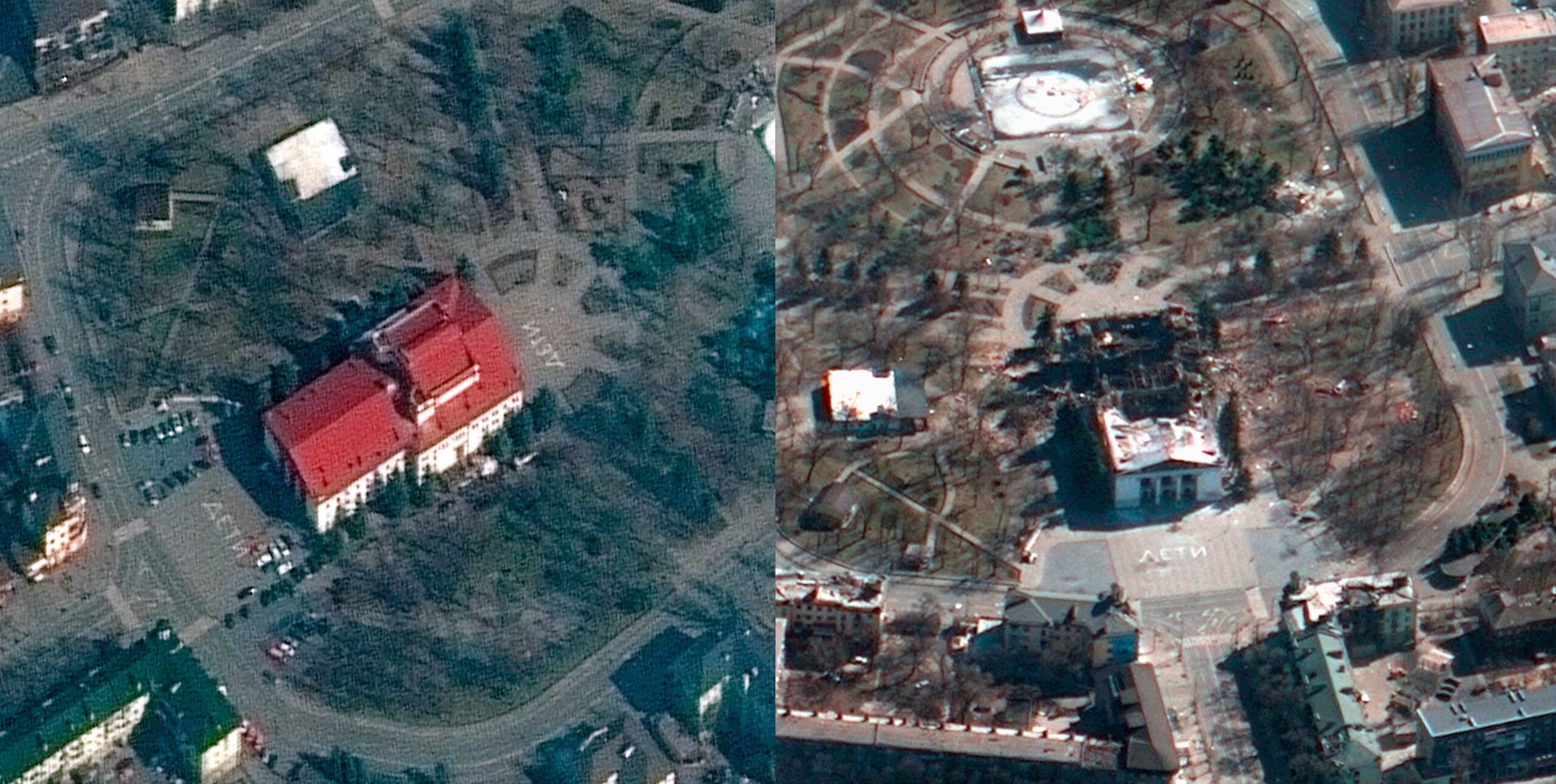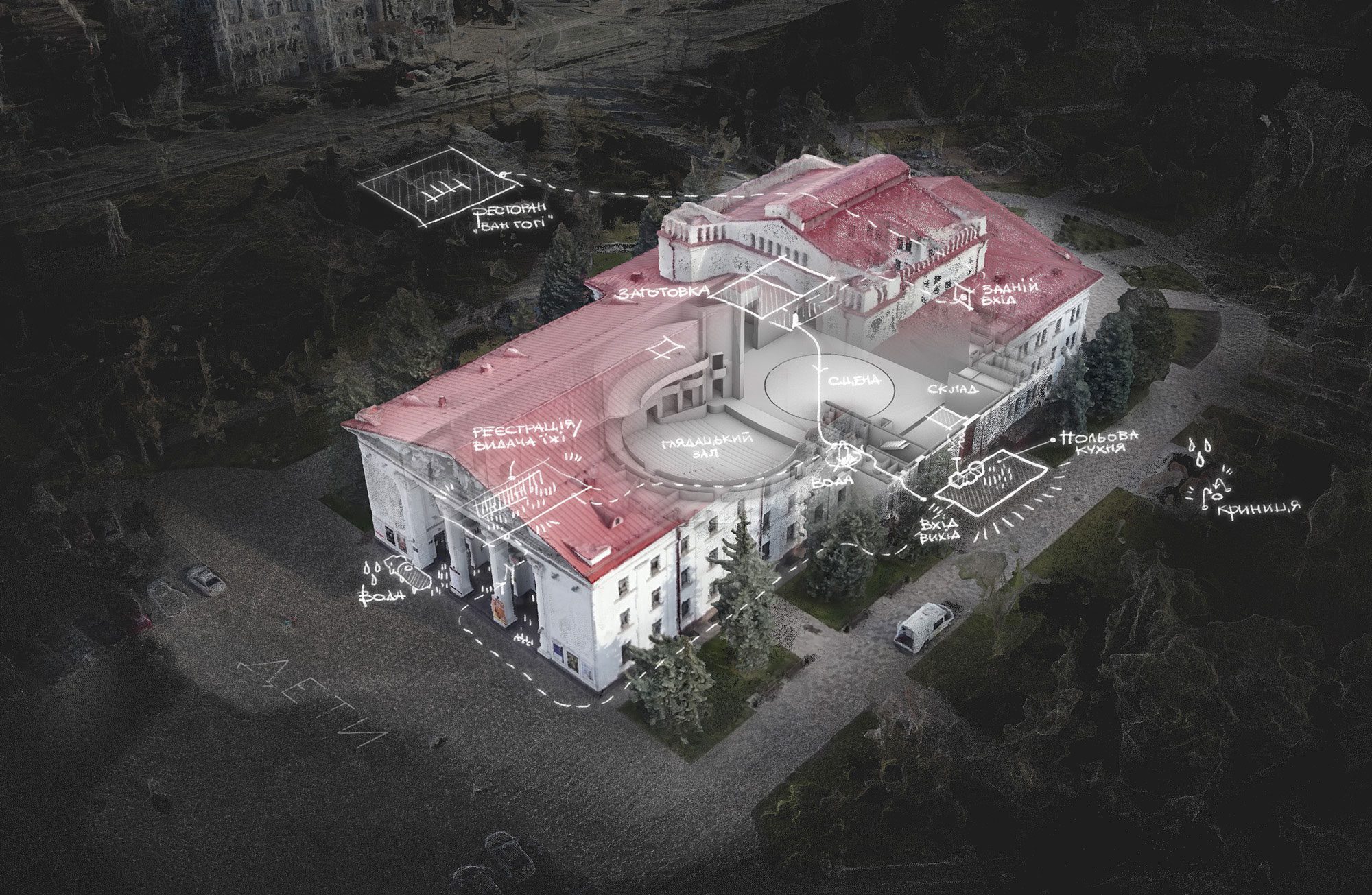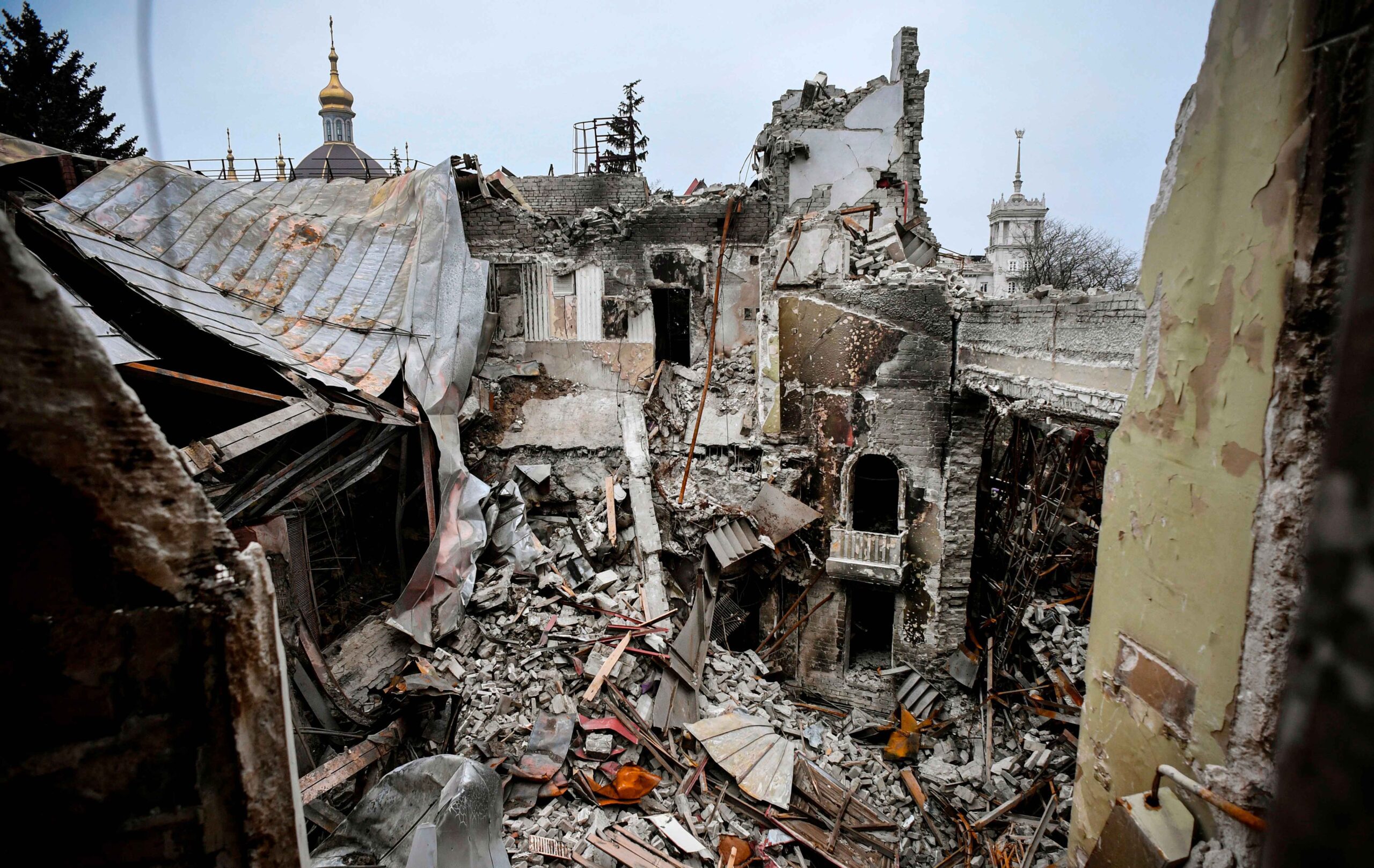The bombing of the theater in Mariupol is one of the most dramatic events of Russia’s war with Ukraine. No one knows exactly how many people died in the attack, where their remains are now, how many people survived, who gave this criminal order, and how many war criminals were involved in the chain of making this decision. The task of a forensic anthropologist is to examine the dead and determine the circumstances of their death. Zaborona sees its task in conversation with the living. Together with the Center for Spatial Technologies, the editorial office collects the testimonies of survivors and witnesses who were in Mariupol during the bombing of the drama theater. If you were a direct or indirect witness of this tragedy, we ask you to read this text to the end and contact us (all contacts are listed at the end of the material).
On the morning of March 16, an explosion occurred in the center of Mariupol surrounded by Russian troops: an aerial bomb hit the drama theater on the right bank of the city. Representatives of the local authorities reported that at that time there were 1,500 people in the building — they had been using it as a shelter almost since the beginning of the full-scale Russian invasion.
When satellite images of the destroyed building appeared, the world saw that shortly before the attack, someone had painted the word “CHILDREN” in Russian in large letters on both sides of the drama theater — so that the occupiers would not target this shelter. After the explosion, these inscriptions already framed the rubble, under which both children and adults died.
-

Mariupol Drama Theater on March 14 and 19, 2022 — before and after the bombing. Photo: Maxar Technologies
For more than a month, the occupiers destroyed Mariupol with artillery, Grad MLRSs, and aviation. It was very important for them to capture the city, which they had been wanting to take since 2014 by the forces of their DNR proxy troops, but could not — due to strong resistance from the Armed Forces of Ukraine and the Azov National Guard regiment, which was based in the Azov region.
In 2022, the Russian military bombed neighborhoods, destroyed critical infrastructure, destroyed hospitals, and tried to cut off parts of a large industrial city from one another. The city with a population of half a million was under siege for a long time. There was no organized evacuation: everyone found their own way to get out, and the occupiers did not provide a humanitarian corridor for civilians to leave. Thus, one and a half thousand residents of Mariupol ended up in the drama theater — a place that for many years was the center of attraction for the townspeople.
But the Russian command was sure that the shelter with hundreds of people should be “demilitarized” and “denazified.” In official Russian propaganda and propaganda social networks shortly before the attack, it was said that soldiers of the Azov regiment were in the drama theater and that they were allegedly planning to make a “provocation” “to force the West to close the sky over Mariupol.” So they prepared a pretext for an attack.
-

Visualization of the Mariupol Drama Theater before the bombing by Russian troops. Image: Center for Spatial Technologies
Shortly after the attack on the theater, at the end of March, the city center was under occupation, and the Russians, together with the proxy troops of the DNR, gained access to the ruins of the drama theater. Since then, there is virtually no objective information about what happened on March 16. There were no independent journalists, investigators of international organizations, or representatives of humanitarian missions in Mariupol at that time. And after the tragedy, only propagandists and Russian journalists, who visit there as part of “press tours” accompanied by the Russian military, appeared there. Direct witnesses of the tragedy remain almost the only source of information about what happened to people in the drama theater.
-

Bombed Mariupol Drama Theater, April 12, 2022. This picture was taken during an official press exercise organized by the Russian military. Photo: ALEXANDER NEMENOV/AFP via Getty Images
The editors of Zaborona believe that the attack on the Mariupol Drama Theater is one of Russia’s biggest crimes during the entire time of the full-scale invasion. Its victims were hundreds of people who were injured, psychologically traumatized, or lost their lives. After the attack on the drama theater, Russia has repeatedly struck places that civilians used as shelters.
Together with the Center for Spatial Technologies, which studies war crimes using spatial analysis, we are investigating the attack on the Mariupol Drama Theater. Our goal is to explore the space where Russian troops struck and to reconstruct the story of the theater and the place in which it is located. And also to find out the circumstances in which the people of Mariupol found themselves, to establish the weapons that were used by the Russian army, and, if possible, to establish the commanders who gave the criminal order for the bombing.
We are currently collecting statements from people who were near or inside the Mariupol Drama Theater during, shortly before, or immediately after the attack, and from anyone who has information that can help us establish the details of the crime. We will transfer the collected evidence to all competent authorities, including the international tribunal. If you have information, photos, or videos that could help the investigation, please contact our team. Write to us at contact@zaborona.com or in this Telegram bot.
A special investigative project is being created with the support of the Media Network








